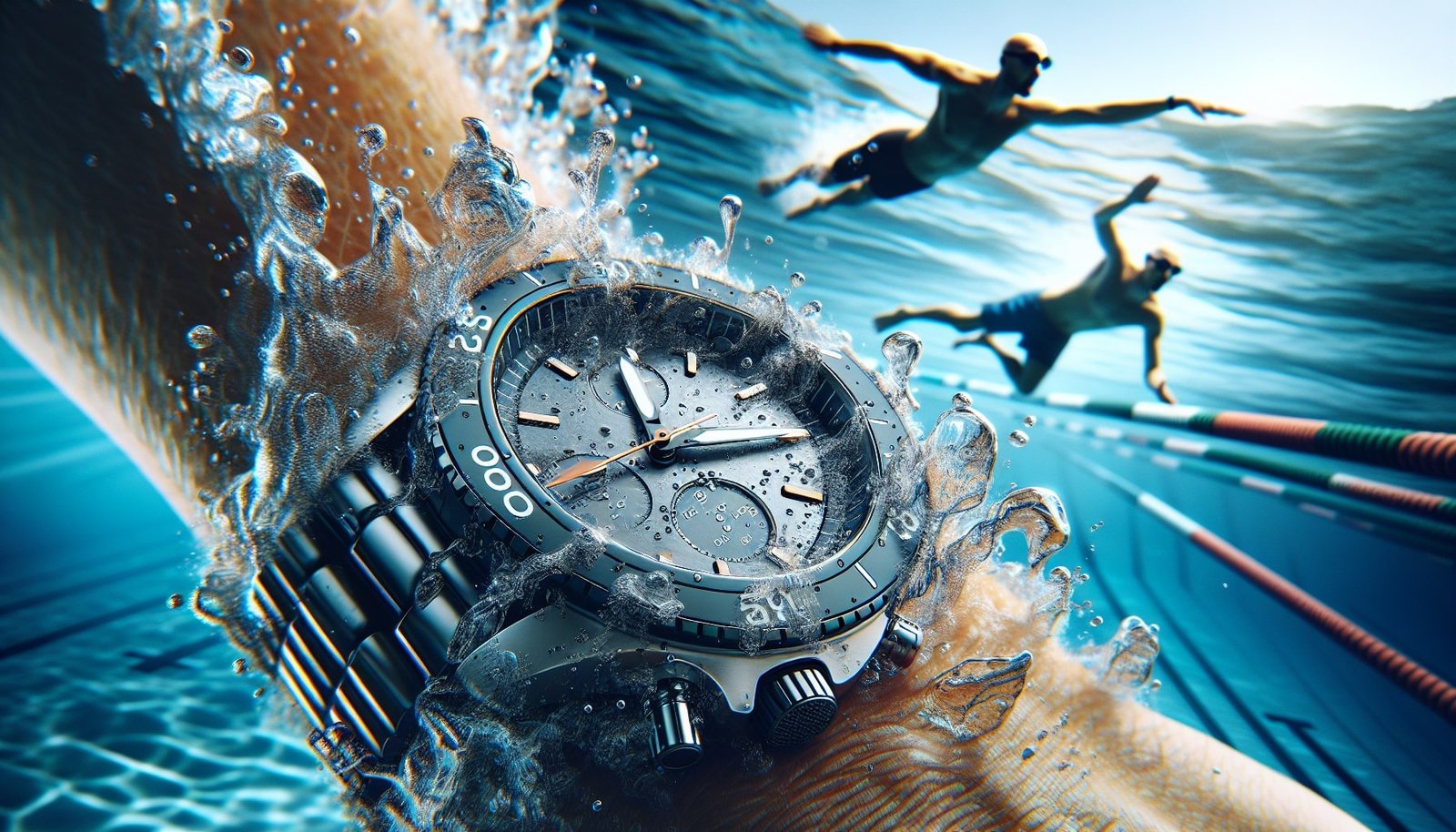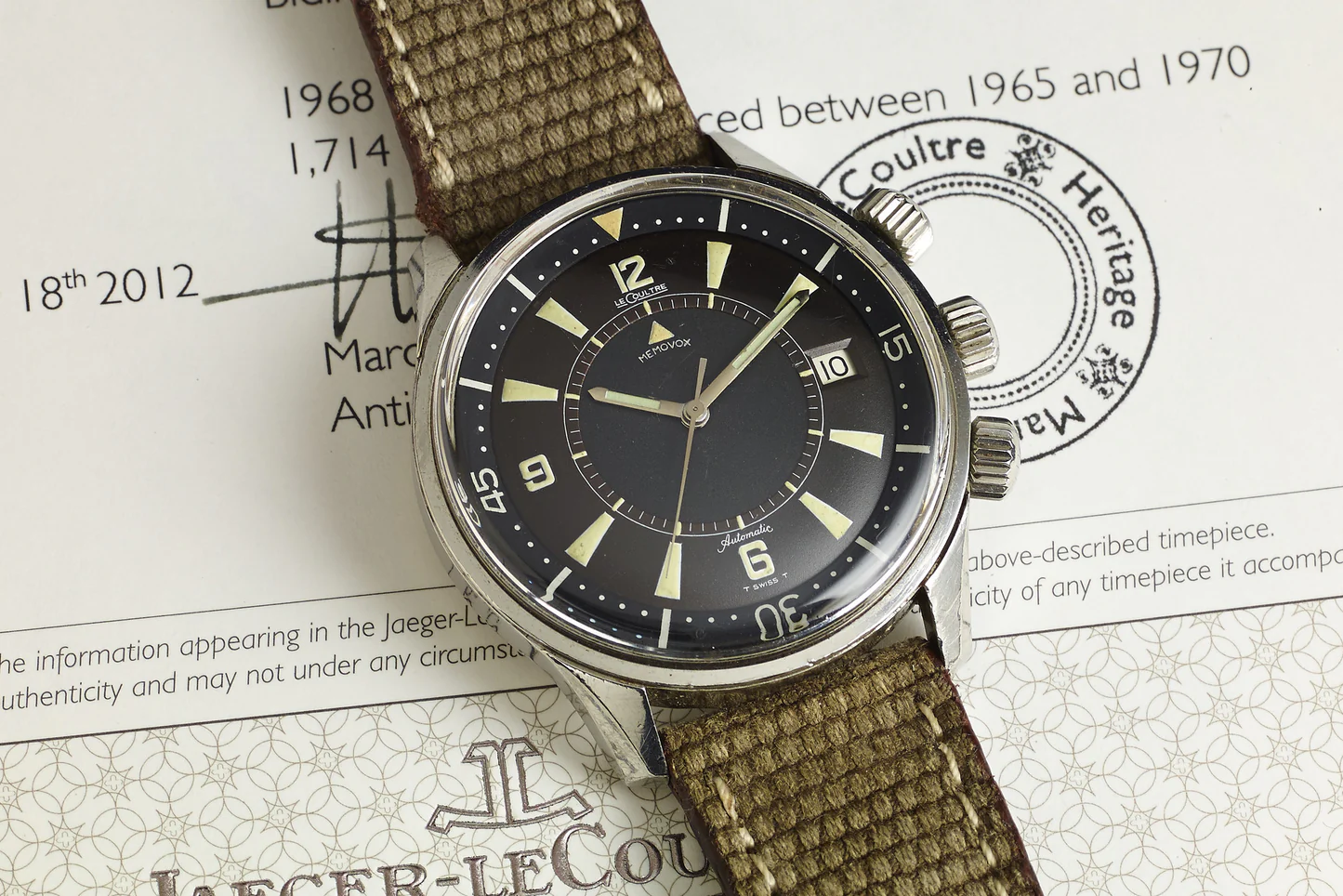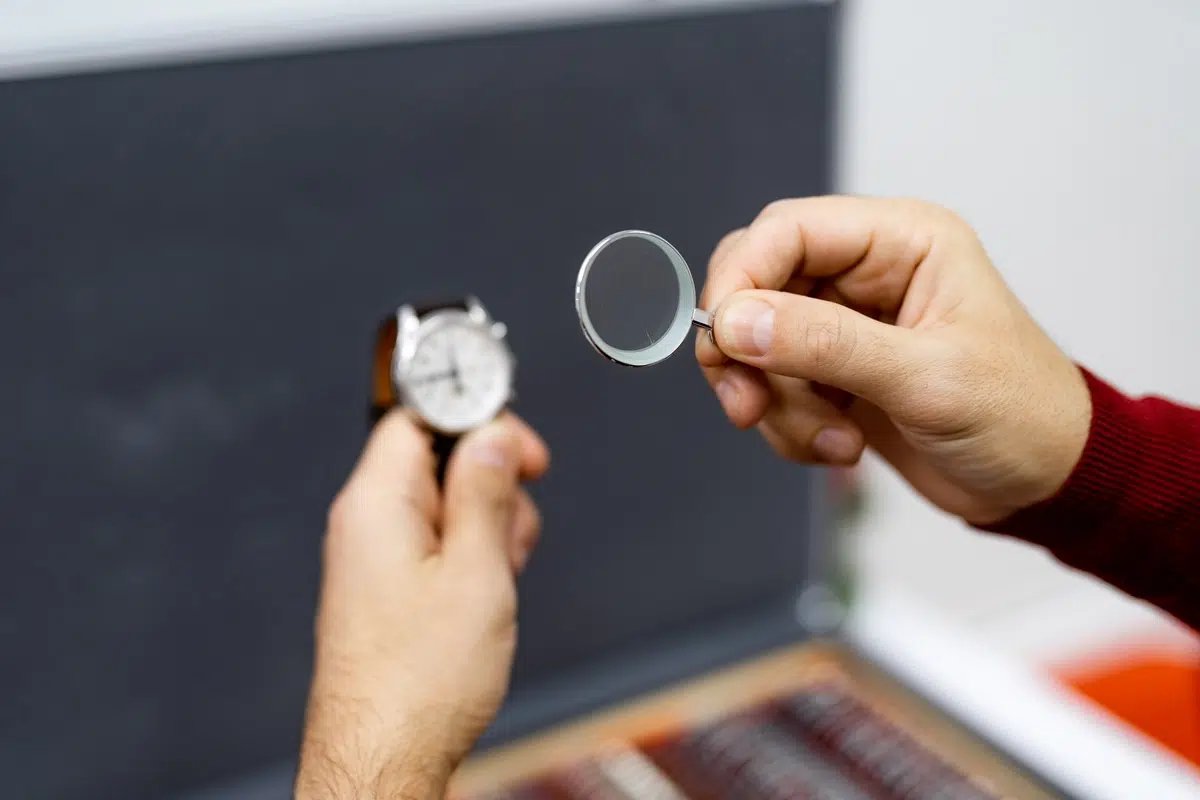Table of Contents
The watch has become much more than just an instrument for telling the time: it is a lifestyle companion that follows us in all our activities, including the most sporty ones. With the emergence of IP68 watchesswimming enthusiasts and others water activities a pertinent question arises: can you swim with an IP68 watch safely ? This article will delve into the heart of the standard IP68 to assess its true water resistance and determine if it is sufficient to accompany swimmers in their swimming sessions. Prepare to make a splash in the world of sports watch waterproofness!
What is IP68 rating?
The index IP68 is a classification code that refers to the water resistance and dust resistance of an appliance according to the international standard established by the International Electrotechnical Commission (IEC). The first digit, “6”, indicates complete protection against the ingress of dust. The second digit, “8”, means that the appliance can withstand a immersion continues in the water at a maximum depth 1.5 meters for up to 30 minutes.
In comparison, a product with an IP67 rating is less water resistant: it can only be submerged to a depth of 1 meter for 30 minutes. However, it should be noted that IP68 index does not guarantee that the device is adjusted for all water activitiesand especially the more dynamic ones like high-intensity swimming or diving.
THE boundaries The IP68 rating for electronic devices is significant. This classification does not take into account pressure variations encountered during rapid underwater movements, nor prolonged exposure to pressures higher than those tested in the laboratory. Therefore, users should be aware of these restrictions when considering using these devices during swimming or other water sports.
Are IP68 watches really waterproof?
There is a common confusion between the terms “ water resistant » (water resistant) and « waterproof » (waterproof). A watch IP68although offering a high level of water resistance, is not formally considered waterproof. In fact, the water resistance tests for IP68 watches are performed under controlled conditions and do not necessarily reflect exposure to water in natural environments with varying pressures.
There are many watches on the market that have an IP68 rating. Among the popular exampleswe find some models offered by renowned brands such as Garmin, Samsung or Apple. These watches are suitable for everyday use and can support shallow water activities such as surface swimming. However, it is essential to keep in mind the recommendations and limitations of the index during more intensive uses underwater.
How do water activities affect waterproofing?
Practice swimming, diving or other nautical sports can significantly influence thewaterproofing of an IP68 watch. Indeed, theimpact of dynamic pressure in swimming is not the same as that of a static immersion tested during certification. Rapid movements and water pressure caused by activities such as diving can exceed the tested resistance, thus challenging the waterproof capabilities of the watch.
In addition, the use of buttons underwater poses an additional risk. Operating the buttons while submerged can allow water to seep in, damaging the watch’s internal circuitry. For this reason, some manufacturers advise against pressing buttons while the watch is submerged.
L’effect of salt water and chemicalssuch as chlorine from swimming pools, on the seals can also reduce the water resistance of your IP68 watch in the long term. These corrosive substances can deteriorate the seals and compromise the overall integrity of the watch’s water resistance.
How to protect your IP68 watch during water activities?
It is essential to adopt certain precautions to maintain thewaterproofing of your IP68 watch. Before theimmersion in water, make sure the crown and all buttons are fully depressed and the watch is in good condition. After submersion, it is recommended to rinse the watch in fresh water to remove salt or chlorine, which can be corrosive.
To maintain long-term watertightness, avoid exposure to extreme temperatures and regularly check the condition of the seals. Here is a bulleted list Things to avoid:
- Salt or treated water: rinse your watch after each swim in salt water or in a chlorinated pool.
- Underwater manipulations: refrain from using the buttons when the watch is submerged.
- Extreme conditions: Very high or very low temperatures can damage seals.
- High impact activities: choose other, more suitable devices if you practice sports with high underwater dynamic pressure.
Are there safer alternatives to swimming?
When it comes to swimming and more intense underwater activities, it may be wise to look at watches designed specifically for these uses. These watches often offer superior water resistance features, thanks to specific certifications such as ATM or ISO 6425 standards reserved for diving.
Watches certified to ISO 6425, for example, are tested to withstand much deeper submersion and significantly higher pressures than an IP68 watch. They also include additional features that can be essential for diving, such as increased underwater visibility and devices to measure dive time. Similarly, ATM (atmosphere) ratings indicate the level of pressure the watch can withstand, with 1 ATM being equivalent to atmospheric pressure at the sea surface.
A notable advantage of these watches is that, in addition to the more robust water resistance, they often feature materials and construction that stand up to the most rigorous time and activities.
[Tableau de comparaison]
| Certification Type | Static water resistance | Depth range (maximum) | Recommended use |
|---|---|---|---|
| IP68 | Yes | Up to 1.5 meters for 30 min | Daily uses, shallow water activities |
| ATM | Yes | Variable, 3 ATM and more for swimming | Swimming, water sports without deep diving |
| ISO 6425 | Yes | 100 meters and more | Professional Diving |
What are the manufacturers’ recommendations?
Watch manufacturers such as Garmin, Apple, and Samsung offer clear guidelines for using their products in water. Garmin, for example, recommends checking the water resistance ratings of each model before engaging in water activities. Apple says that while the Apple Watch is water-resistant, it should not be used for activities that require underwater movement or deep submersion. Samsung, meanwhile, emphasizes the importance of rinsing with fresh water after use in salt or chlorinated water.
Considering and following these recommendations is crucial not only to preserve the functionality of the watch, but also to avoid any water-related damage that may not be covered by the warranty.
What is the user feedback?
Testimonials from users who have swum with IP68 watches are divided. Some report complete satisfaction, emphasizing the convenience of having a watch that resists splashes and accidental immersions. Others, on the other hand, describe situations where thewaterproofing has been compromised, especially when using the buttons underwater or during high-intensity swimming activities, which has led to water infiltration and internal damage.
A common recommendation from the community is to treat the watch with care, avoiding any handling that could put pressure on the seals. It is also advisable to regularly test the water resistance of the watch, especially after shocks or intensive use in an aquatic environment.
How to choose the ideal watch for your aquatic activities?
Choosing a watch for swimming or other purposes nautical sports must be guided by several essential criteria. The clarity of waterproofing specifications is paramount: Look for watches with certifications that are tailored to your specific activities, such as ATM standards for swimming or ISO 6425 for diving. Also check for dedicated swimming features, such as lap tracking and stroke detection.
In summary, for safe use, select a watch whose water resistance meets your sporting needs, and strictly follow the manufacturer’s maintenance instructions. Finally, be aware that even with a highly water-resistant watch, caution is still the best reflex to ensure the durability of your device in an aquatic environment.






